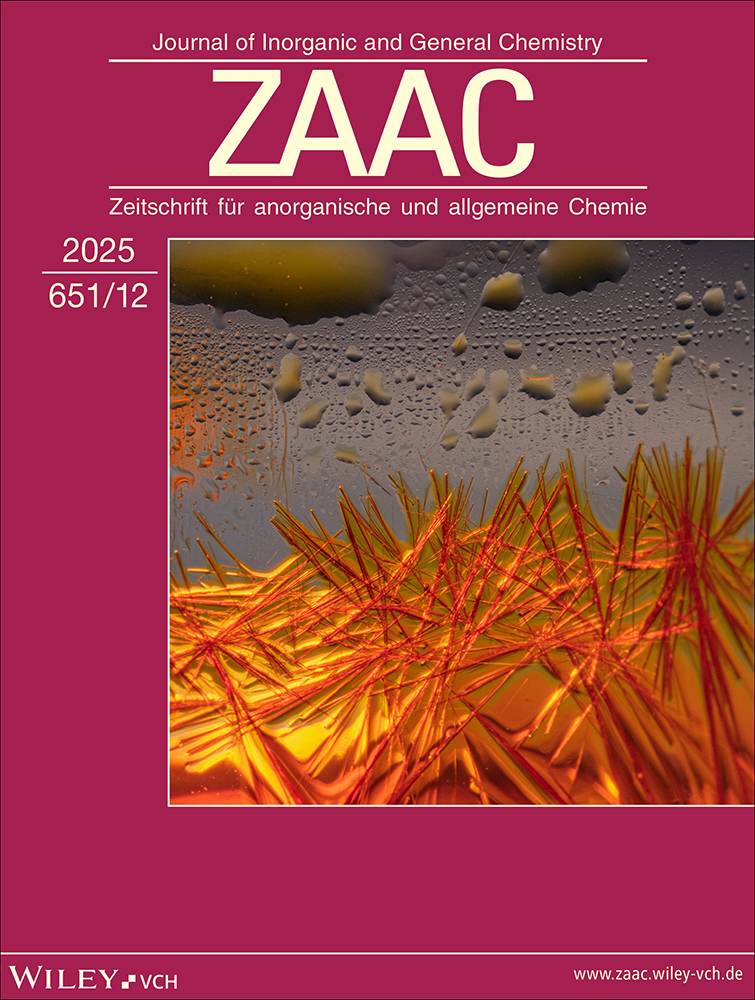New Heterocyclic Organophosphorus–Sulfur–Nitrogen Compounds, Syntheses and Structures
Abstract
enThe new compound C10H6P(S)[NSi(CH3)3]2P(S) (3) which contains a P2N2 heterocycle has been prepared in low yield by partial thermal decomposition of 1-{[N,N′-bis(trimethylsilyl)acetamidinium]sulfido}-3-(trimethylsilylamino)-1 H,3 H,1 λ5,3 λ5-naphtho[1,8 a,8-cd][1,2,6]thiadiphosphinine-1,3-dithione [CH3C{NHSi(CH3)3}2]+[C10H6P(S)(NHSiMe3)SP(S)2]– (2). Reaction of 2 with potassium hydroxide in acetonitrile gives the completely desilylated product [CH3C(NH2)2]+[C10H6P(S)(NH2)SP(S)2]– (4). The structures of the new compounds 3 and 4 were elucidated by FTIR and NMR spectroscopy methods and by X-ray structure analyses.
Abstract
deNeue heterocyclische Organophosphor–Schwefel–Stickstoff-Verbindungen, Synthese und Struktur
C10H6P(S)[NSi(CH3)3]2P(S) (3), eine neue Verbindung mit einem P2N2-Heterocyclus, bildet sich mit 8proz. Ausbeute bei der partiellen thermischen Zersetzung von 1-{[N,N′-Bis(trimethylsilyl)acetamidinium]sulfido}-3-(trimethylsilylamino)-1 H,3 H,1 λ5,3 λ5-naphtho[1,8 a,8-cd][1,2,6]-thiadiphosphinin-1,3-dithion [CH3C{NHSi(CH3)3}2]+[C10H6P(S)(NHSiMe3)SP(S)2]– (2). Die Reaktion von 2 mit Kaliumhydroxid in Acetonitril führt zum vollständig desilylierten Produkt [CH3C(NH2)2]+[C10H6P(S)(NH2)SP(S)2]– (4). Die FTIR- und NMR-Spektren der neuen Verbindungen 3 und 4 werden angegeben und ihre Kristallstrukturen beschrieben.




